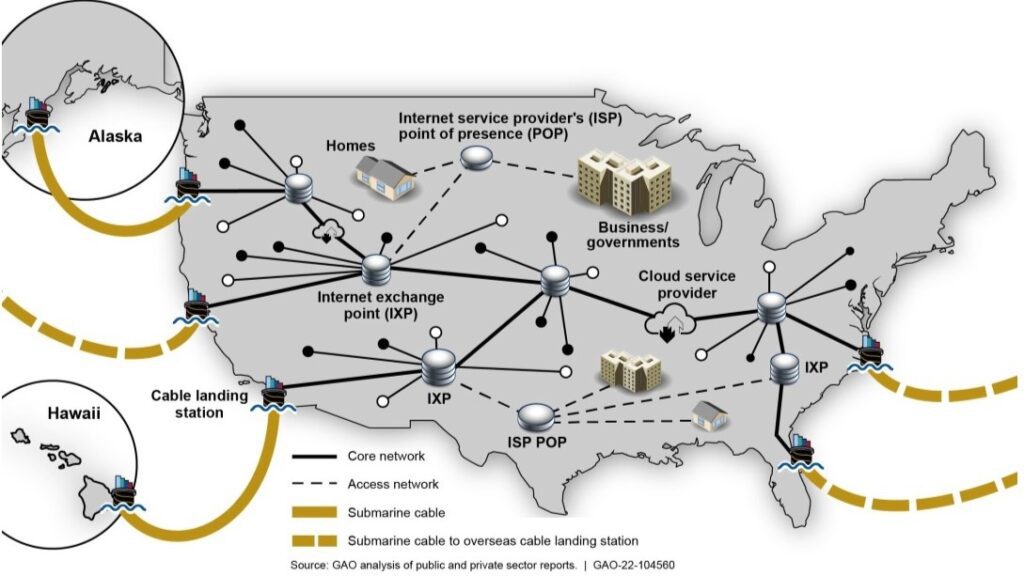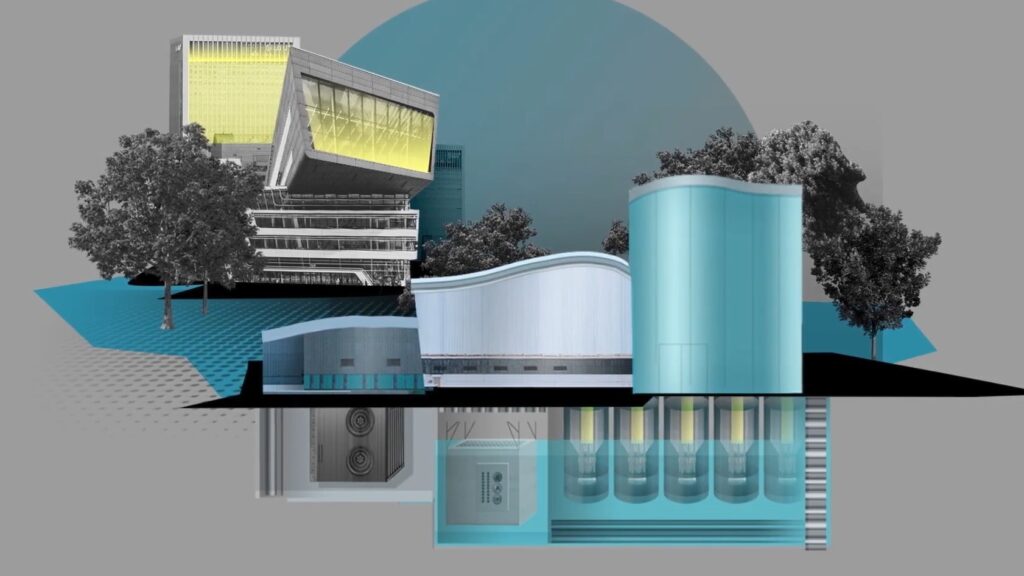IXPs Could Prove to Be Cure for Rural Middle-Mile Latency
Randy Sukow
|

The middle mile has been a problem for rural broadband providers since early DSL services in the 1990s. Even today, the distance between an NRTC member’s service area to the nearest connection to the core network could be hundreds of miles. Establishing a fiber link to the core network is costly and with the distances involved, latency will creep into the service no matter how fast the last-mile, fiber-to-the-home speeds might be.
Companies that require very low latency for their fiber communications have turned to using internet exchange points (IXPs). An IXP is, simply put, a way to bring the internet closer to the user. It is a physical location located at an intermediate point between the core network and connecting ISPs. A high-speed, backbone line connects a small building or room in an office building to a series of switches. The result is a shorter middle mile, lower cost, and lower latency.
The diagram above from a 2022 Government Accountability Office Report demonstrates the important role IXPs have in connecting not just ISPs, but cloud providers and international submarine cables, to the core network.
To date, however, IXPs have been a tool to improve connectivity for large companies in urban areas and rarely in rural areas. In fact, 14 states have no IXPs. But that could be changing as data center owners seek rural areas to build facilities and meet the connectivity demands created by artificial intelligence (AI).

“In order to reduce the latency for AI, this type of equipment for networks dedicated to facilitating this interconnection is essential, and it’s being required,” said Hunter Newby of Newby Ventures, a panelist at the recent “Data Centers, Nuclear Power and Broadband Summit,” in Washington, DC, hosted by BroadbandBreakfast. “It’s actually requested now. I’m seeing a lot of it from AI GPU [graphics processing unit] cloud aggregators that have specific customers with specific latency tolerances.”
The summit centered on the growth of data centers and how they could change the business landscape of rural America, including the potential construction of small nuclear power plants collocated with data centers. One of the panels focused on the potential for IXPs to lower latency not just for data centers, but for all rural broadband providers.

“Rural America is where you’re going to see SMRs [small modular reactors]. We heard about the SMR going into Oak Ridge, TN, where there’s a bit more progressive local municipality that sees the value, and wants to attract that,” said Ron da Silva, CEO and founder of Network Technologies Global, who predicted that much data center growth could be in Northern regions where the cost of cooling data center facilities could be less. “If you put that in a nice, cool part of the U.S. next to an SMR, well that’s going to push that middle mile connectivity … then [it will] drive deeper fiber.”
As data center owners and investors search for locations and partners to establish IXPs in strategic parts for the country, they are concerned that IXP owners maintain independence and what they call “carry neutrality” to avoid monopoly control.

“Without neutrality, the challenge is that you’ll have one operator or potentially one content provider dominate the capability to the site. They may limit the participation of other operators or other content companies,” said Art Kazmierczak, director of Strategic Sales & Network Development, ARELION, a Swedish investment company that backs tier-1 fiber networks. Kazmierczak suggested that independently owned IXPs will be important to establishing IXP growth and economies of scale.
Capital expenditures for IXPs will vary depending mostly on the cost of real estate or a lease to establish the location. Along with the networking equipment, the site also needs a reliable power source.
IXPs are a growing necessity throughout national and international networks, “if you’ve got real time applications, maybe autonomous driving or autonomous control of construction or mining or even healthcare applications,” Kazmierczak said. “This data takes a long time to get back to the actual equipment that’s moving in real time, and that causes delays in judgment, delays in decisions, and poorer performance.”


